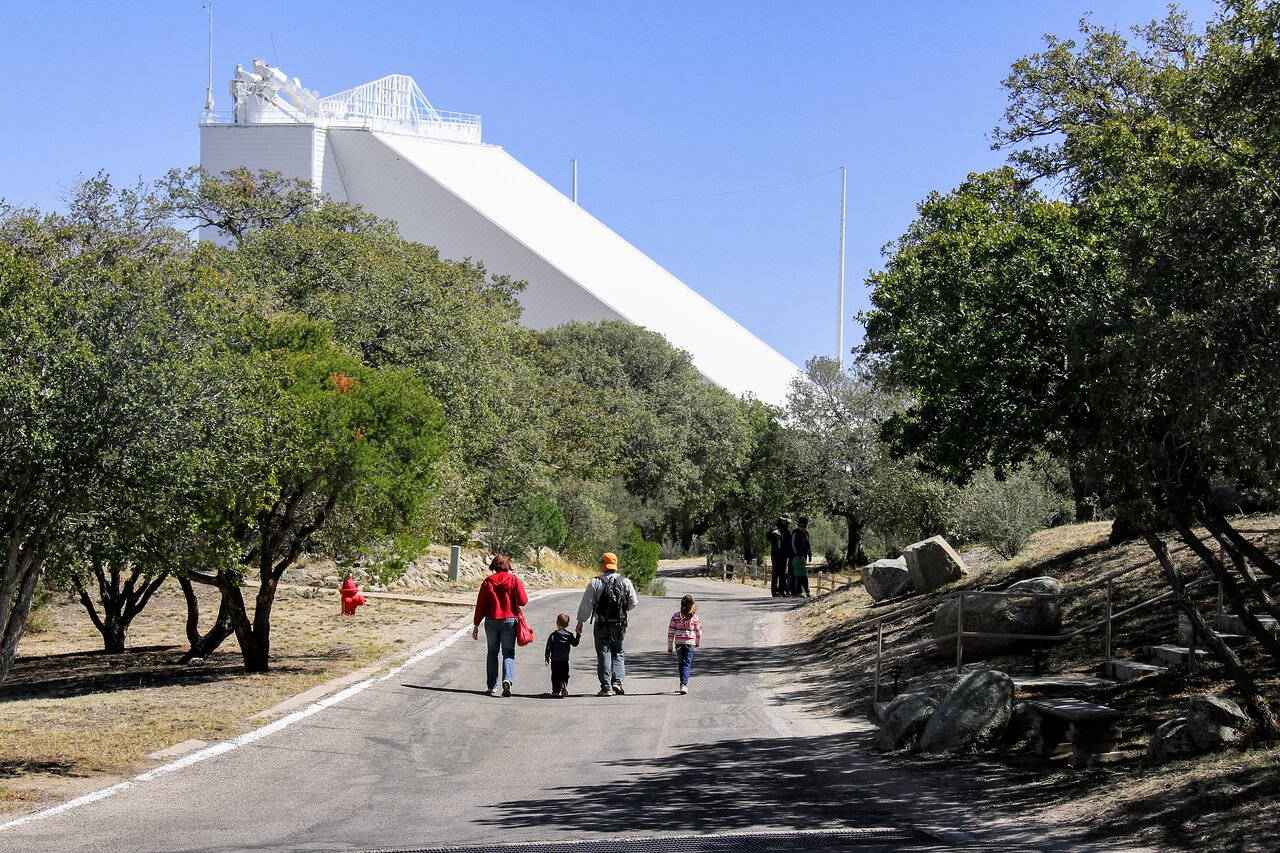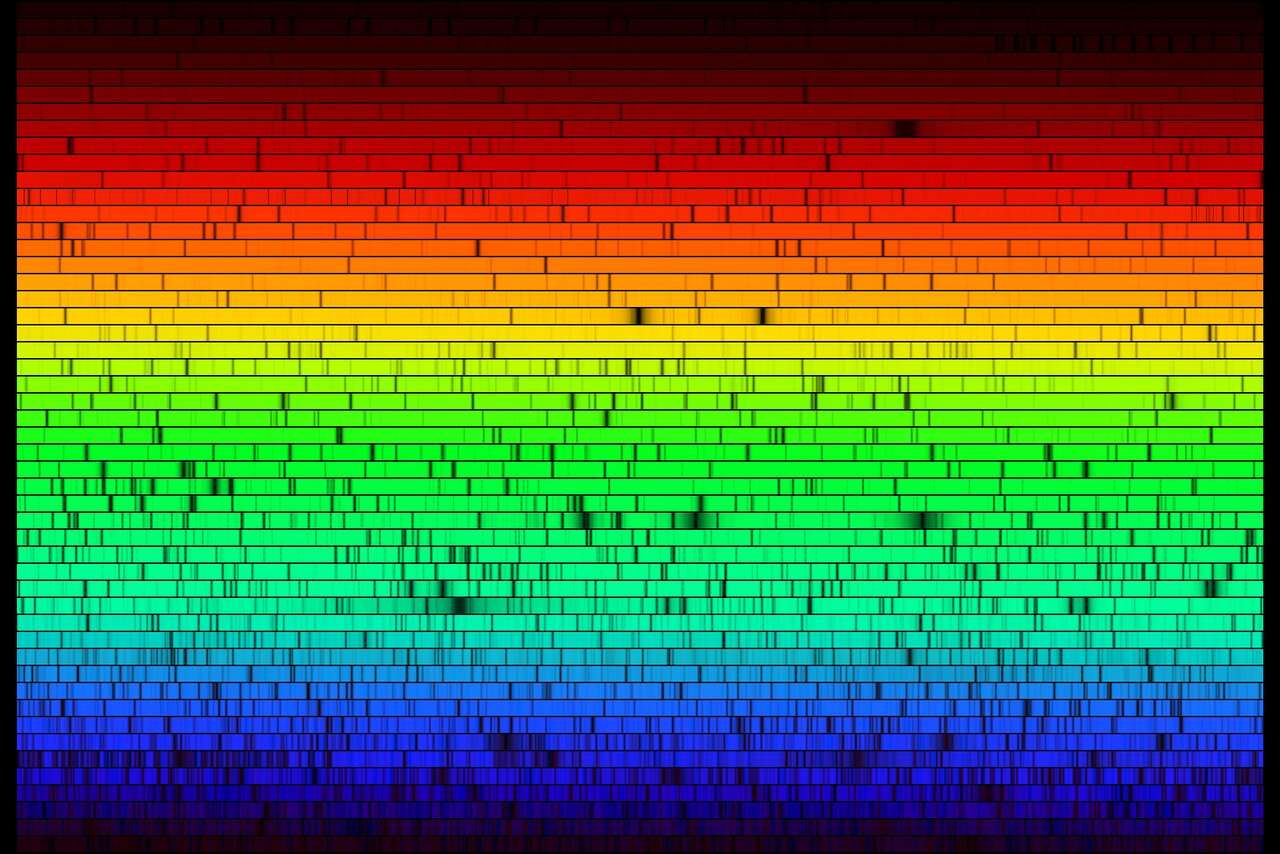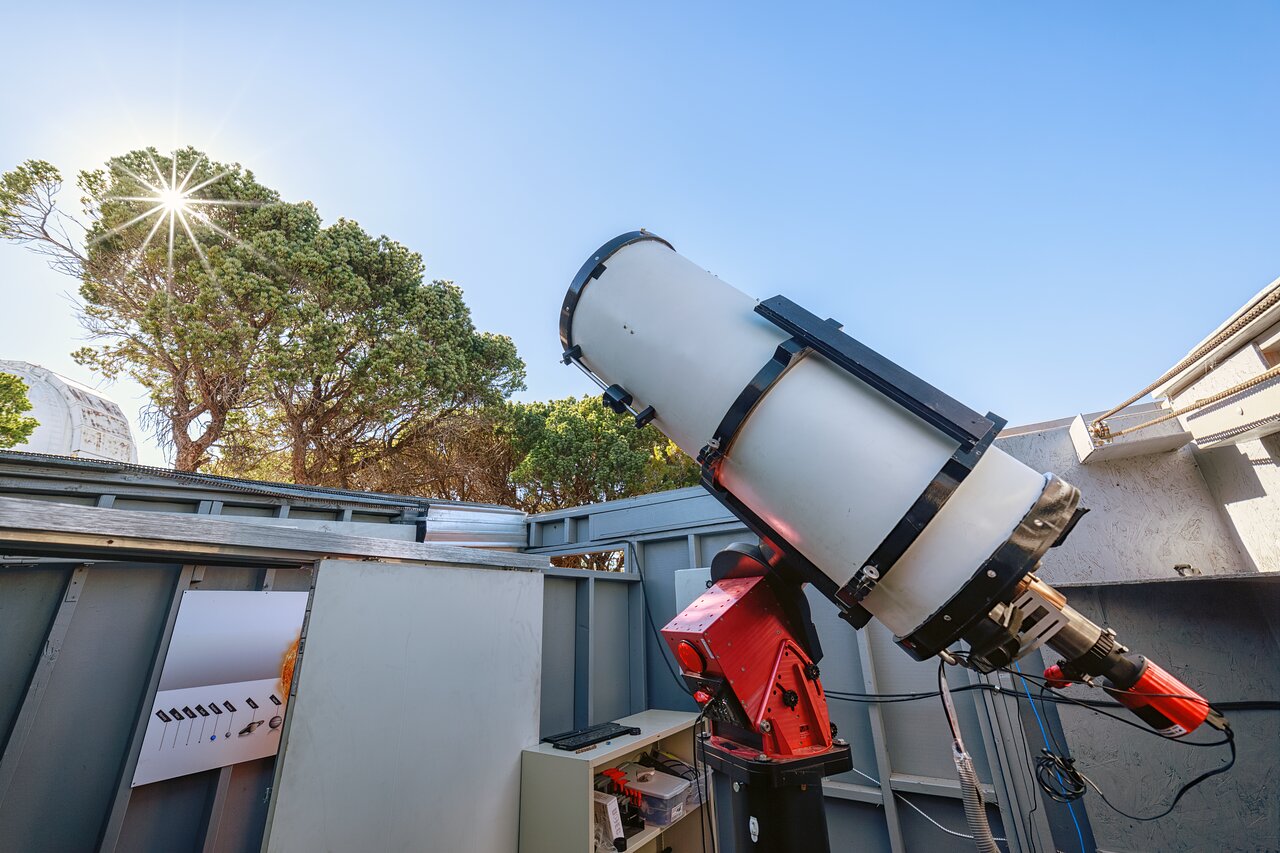Kitt Peak National Observatory Field Trips

Panoramic view of the Kitt Peak Visitor Center and the Visitor Center 0.5-meter Telescope dome on Kitt Peak National Observatory. Credit: KPNO/NOIRLab/NSF/AURA/P. Marenfeld
The U.S. National Science Foundation Kitt Peak National Observatory (KPNO), a Program of NSF NOIRLab, is pleased to offer five different field trips to K–12 school groups, homeschool groups, and other education groups. Expose your students to the cutting-edge science and engineering of a national observatory!
All field trips are tailored by grade level and feature a visit to the Windows on the Universe Center at the McMath-Pierce Solar Telescope. Field trips begin with students learning about the Tohono O’odham Nation, who are the stewards of the Sonoran Desert including the Quinlan Mountains, where Kitt Peak is located. Then, students will explore the exhibits related to the Sun and how astronomy research has led to our current understanding of the cosmos, followed by a step back in time with a visit to the McMath-Pierce control room to see the technology that once operated the telescope.

McMath-Pierce Solar Telescope at Kitt Peak National Observatory. Credit: KPNO/NOIRLab/NSF/AURA/P. Marenfeld
Field trips also feature a grade-appropriate Science on a Sphere Show, “The Sun: Our Living Star”, which takes students on a journey to our nearest star in a 20-minute guided experience. Following the show, students will engage in a hands-on activity that matches their grade level and is correlated to the Arizona Science Standards. See the available activities below; each activity can be pre-selected by the teacher on the field trip form.
Field Trip Activities
All field trip activities support the Arizona Science Standards Core Idea E2: The Earth and our Solar System are a very small part of one of many galaxies within the Universe.
Solar System (Grades 3–12)
Visualize the size and scale of objects in our Solar System by creating a scale model.
- 5.E2U1.7 — Develop, revise, and use models based on evidence to construct explanations about the movement of Earth and the Moon within our Solar System.
- 6.E2U1.7 — Use ratios and proportions to analyze and interpret data related to scale, properties, and relationships among objects in our Solar System.
- HS+E.E2U1.16 — Obtain, evaluate, and communicate information about patterns of size and scale of our Solar System, our galaxy, and the Universe.
Life Cycle of Stars (Grades 9–12)
Explore the process that forms stars in a nebula or construct a Hertzsprung–Russell diagram to learn about the evolution of stars in these hands-on activities.
- HS.E2U1.15 — Construct an explanation based on evidence to illustrate the role of nuclear fusion in the life cycle of a star.
- HS+E.E2U1.12 — Obtain, evaluate, and communicate scientific information about the way stars, throughout their stellar stages, produce elements and energy.

Solar spectrum observed at the McMath-Pierce Solar Telescope. Credit: N.A. Sharp/KPNO/NOIRLab/NSO/NSF/AURA
Field Trip Enhancements
The following opportunities are available to enhance your field trip experience.
Himdag Program
The Expanded Tohono O’odham Himdag Program provides students of the Tohono O’odham Nation with an opportunity to enhance their cultural identity and sense of place. Led by NOIRLab’s Tohono O'odham Nation Education Development Liaison, and in partnership with, and with guidance from, other tribal members, students will engage in authentic programming in a welcoming space as they deepen their understanding or experience of the history of KPNO and Tohono O’odham traditional ecological knowledge atop the mountain, astronomy, and vocabulary, or storytelling (during winter months).
Telescope Tours
Tour one of KPNO’s large research telescopes up close and learn about its history and current research mission. Tours are available to the Nicholas U. Mayall 4-meter Telescope and the KPNO 2.1-meter Telescope (depending on observatory availability).
Solar Viewing
View sunspots, prominences, filaments, and other solar features through our safe, filtered solar telescope, SOLARIO (weather permitting).

Day-time view of SOLARIO. Credit: KPNO/NOIRLab/AURA/NSF/P. Horálek
Sample Itinerary
The field trip experience at Kitt Peak is designed to last three to four hours. Below is a sample itinerary that can be rearranged as a rotation to accommodate larger group sizes.
| 9:30 |
Welcome & Safety Talk The group arrives at Kitt Peak Visitor Center |
| 9:50 — 11:00 |
Windows Center Science on a Sphere Show |
| 11:00 — 11:40 |
Hands-on Activity The activity supports selected topic |
| 11:40 — 12:20 |
Lunch Bring your own lunch |
| 12:20 — 1:00 | Add on: Telescope Tour (2.1-m or 4-m or SOLARIO) |
| 1:00 | Depart Kitt Peak |
Important Information
Class size: We can accommodate class sizes up to 45 students.
Chaperones: We require one chaperone for every 10 students.
Cost: Free
Lunch: Bring your own lunch. Kitt Peak is not able to provide lunch for field trips. Water fountains/water bottle filling stations are available in the main Visitor Center building and at the McMath-Pierce Solar Telescope Windows Center.
Directions: Kitt Peak is located at the end of Route 386 on the Tohono O’odham Nation, 54 miles west of Tucson (at least a 90-minute drive from downtown). Coming from Tucson, take route 86 (Ajo Way) west to the junction of 386. Make a left turn at the brown Kitt Peak National Observatory sign and follow the road to the top of the mountain. Please see the Google map below for additional information and directions to Kitt Peak Visitor Center. For more information about your visit, including weather and summit safety, see the Plan Your Visit page.
****CONSTRUCTION NOTE: Due to possible delays caused by ongoing road construction throughout the fall of 2024, please leave an extra 45 minutes to arrive at the Kitt Peak Visitor Center for the start of your tour****